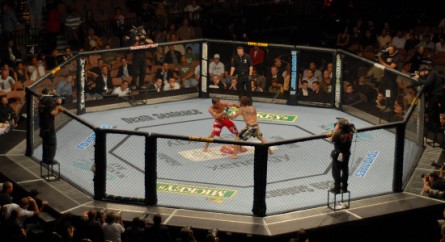
The most famous Octagon on the planet has had a career marked by memorable debuts. Photo: Josh Hedges/UFC
This Saturday (15), the UFC takes another important step in its global expansion project and sets up its sumptuous structure for the first time in Mexico. With the dispute for the interim heavyweight belt between the Brazilian Fabricio Werdum and the New Zealander Mark Hunt at UFC 180, the biggest MMA organization on the planet takes its initial step in the important Mexican. But this won't be the first time the Octagon has debuted in a new market.
The history of Ultimate Fighting Championship is marked by memorable “firsts”, which defined the organization’s trajectory and also marked cities, countries and continents. Therefore, the SUPER FIGHTS prepared for you a two-part special with the most notable debuts in the UFC's 20-year history.
1993: United States
The UFC's first appearance in history was also the event's first appearance in the United States. The city chosen to host the brand new tournament that would define which martial art was the most efficient was Denver, in the state of Colorado, as it has more flexible and permissive legislation regarding the promotion of sporting events.
Around 7.800 people attended the “McNichols Sports Arena” to watch the one-night championship that crowned the Brazilian Royce gracie, it's yours Gracie jiu-jitsu, as champion of the first edition of the Ultimate Fighting Championship after three quick submission victories. The night of that November 12th was the kickoff for a tortuous, but successful, trajectory that culminated in the creation of a new sport, since at that time the term MMA didn't even exist. But the rest, as they say, is history…
1996: Puerto Rico
With an erratic path in its first years of life, the UFC reached its eighth edition in 1998 and prepared for its first international foray – although this took place in an “unincorporated territory” or “free associated state” of the USA. The city chosen was Bayamón, in Puerto Rico.
Despite the novelty regarding the location, the edition was notable for being the trigger for a controversy that culminated in a strong opposition campaign that led to the banning of the UFC in several North American states. The Puerto Rican government itself had signed legislation prohibiting the show, but the tournament ended up being held.
The competition, once again held in an elimination tournament system between eight fighters, was won by the member of UFC Hall of Fame Don Frye, who got past Thomas Ramirez, Sam Adkins and Gardy Goodridge to win the title. The event also featured a superfight between Ken Shamrock and Kimo Leolpoldo, won by Shamrock via submission.
1997: Japan
If for some a visit to an associated free state cannot truly be considered an international trip, a year after the event in Puerto Rico the UFC went to the other side of the world. Coincidentally, at the time when PRIDE was born in Japan, Ultimate arrived for the first time in the “Land of the rising sun” with the UFC 15.5 card, also known as “Ultimate Japan”.
And once again, guess what, the UFC's debut in a new home was historic. To brighten up the night and draw the attention of the local public, the organization signed the star of pro wrestling Japanese Hiromitsu Kanehara. However, Kanehara suffered an injury a few days before the event and was replaced by his previously unknown training partner, Kazushi Sakuraba – approximately 15 kg lighter than the rivals he would face in the heavyweight tournament.
In his first fight, Sakuraba found himself facing great controversy. Referee Big John McCarthy misinterpreted the Japanese's movement and gave victory to Brazilian Marcus Silveira by technical knockout. Analyzing the video later, the judge went back, turned the result into a “no contest” and counted on luck for a rematch between Silveira and Sakuraba to be held on the same night, in the grand final, due to the cut of the injured Tank Abbot. . In the second chance, Sakuraba didn't give Silveira a chance and beat the Brazilian by submission just three minutes into the fight, winning the heavyweight tournament.
Speaking of the under-120 kg category, Ultimate Japan was the stage for winning the division's first title, which went to Randy Couture after the judges' unanimous decision victory over Maurice Smith. Since it was a heavyweight night, the Brazilian and former champion of the UFC 12 tournament Vitor belfort He also fought on the night and beat Joe Charles by submission.
1998: Brazil
It may have taken a long time for the UFC to return to Brazil, but the country was part of the organization's history very early on. In addition to being the homeland of one of the event's founders and the champion of three of the first four editions, Brazil was the fourth country – behind the USA, Puerto Rico and Japan – to host a night of fights. Known here at the time as a MMA tournament, UFC 17.5, or “Ultimate Brazil”, took place on October 16, 1998, at Ginásio do Canindé, in São Paulo (SP).
One of the big new features introduced on the Brazilian card was the absence of traditional one-night tournaments, something that had only happened previously at UFC 9 and would not happen again until the model was definitively abandoned. Despite having big names in the program, such as the future Hall of Fame Pat Miletitch, Frank Shamrock, Tank Abbot and Jeremy Horn, the big fight of the night was between the Brazilians Wanderlei Silva e Vitor belfort.
Two rising stars at that time, Wanderlei and Vitor stepped into the Octagon with the prospect of putting on one of the most electrifying fights of the night. And they did, during the 44 seconds the fight lasted. To this day, the devastating sequence of Vitor belfort about Wand, who threw dozens of punches continuously at his rival to secure the knockout and win the victory. Another scene that was recorded from the duel was the invasion of the ring after Vitor's triumph, whose popularity soared even further from then on.
2001: Las Vegas
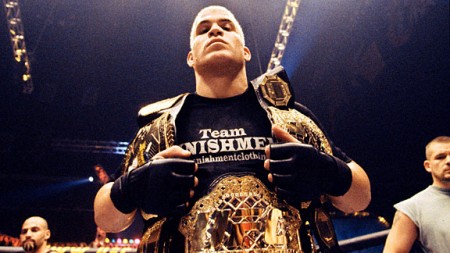
Big star of the time, Tito Ortiz defended his belt in his debut in Vegas. Photo: Disclosure
Today Las Vegas is the home of the UFC, having hosted 86 of the 218 events already promoted by the organization. But this perfect marriage only began when Zuffa, a company led by Dana White and the Fertitta brothers, took control of the organization. It took almost eight years of existence and 35 events until Ultimate finally landed in the “City of Sin” for the first time on September 28, 2001, just 17 days after the terrorist attacks on the “World Trade Center” building in New York.
Even though it was a landmark moment for the organization, the UFC 33 card is remembered by president Dana White as the worst ever promoted in history. Whether due to the proximity to such a tragic event for the country, which made everything else take a backseat, or the fact that all the fights on the main card went to the judges' decision, which meant that many broadcasts in system of pay-per-view were cut before the end of the exhibition, the fact is that the night was an unprecedented fiasco.
The card had names such as future champions Chuck Liddell, who beat Brazilian Murilo Bustamante, and Matt Serra, who went through Yves Edwards. In the co-main event, Jens Pulver retained the lightweight belt by defeating Dennis Hallmann. In the main event of the night, the light heavyweight champion and big star of the organization at that time Tito Ortiz defended his title by beating Belarusian Vladimir Matyushenko.

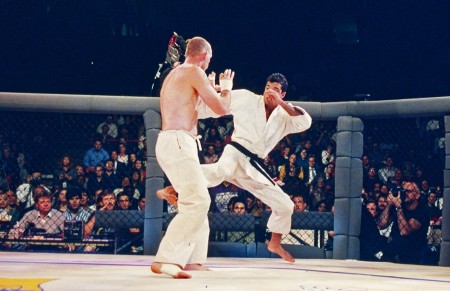
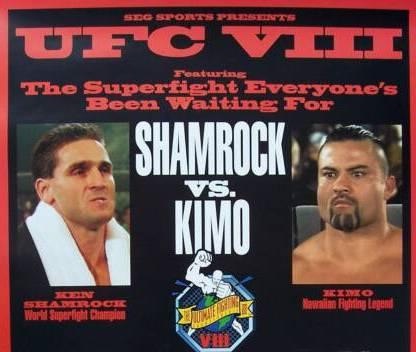
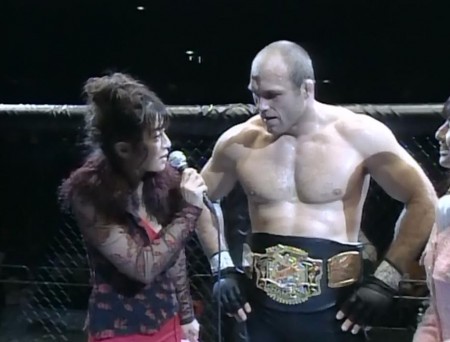
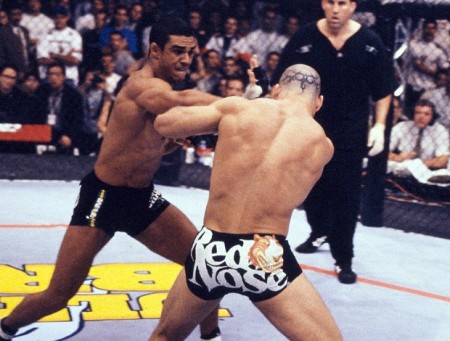
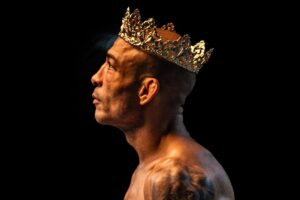
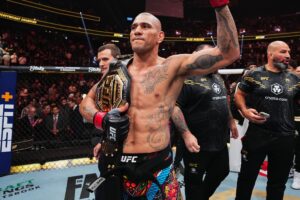
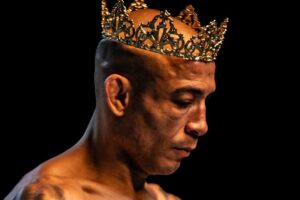
Comments